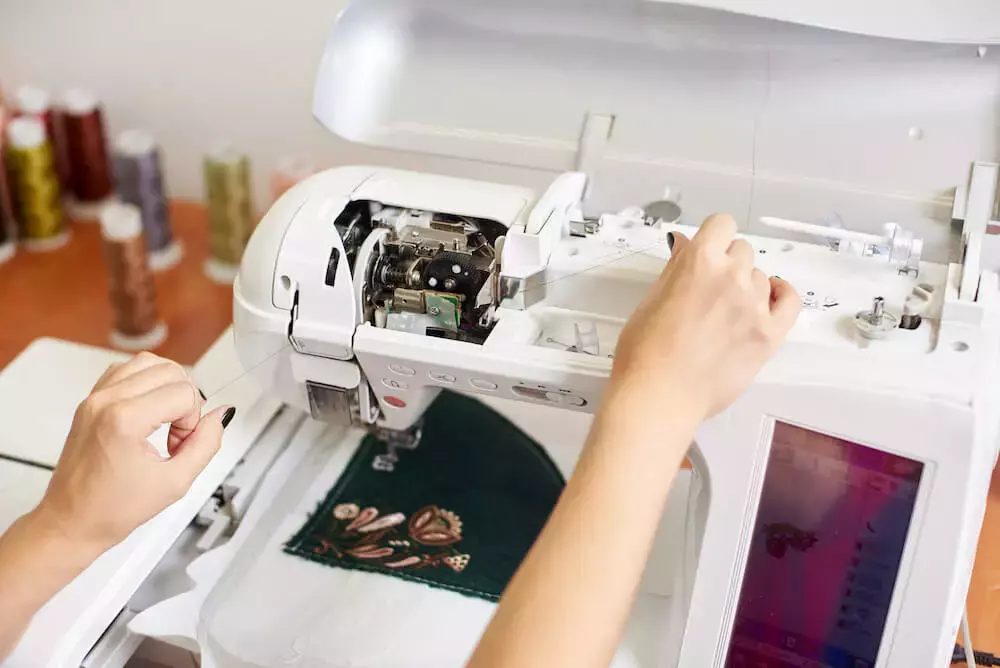How to Change a Sewing Machine Needle
2023-01-03
If you're new to sewing, it's important to take some time to get to know your machine inside and out before jumping into a big project. You should know all the different parts of your machine, how to thread it, how to adjust the stitch settings, and most importantly, how to change the needle.
Changing your sewing machine needle is something you'll have to do a lot — so the earlier you learn how to do it, the better.
When Should You Change Your Sewing Machine Needle?
Knowing when to change your sewing machine needle is just as important as knowing how. The most obvious sign it's time to replace your needle is when it breaks or snaps.
The first time a needle breaks on you can be a jarring experience, but there's no need to panic; this happens to everybody at one point. The most common reason needles snap is because your project is too heavy. Take a snapped needle as a learning experience and try replacing it with a bigger, stronger needle.
You may also need to change your needle if you change the fabric you're using. Different types of fabric require different types and sizes of needles. Using the wrong size or type of needle can lead to damaged fabric, fraying stitches, and skipped stitches.
Lastly, you should change your needle if it becomes worn down, bent, or dull. A damaged or dull needle can cause your fabric to snag, produce uneven or skipped stitches, and cause your thread to break or shred.
How to Change a Sewing Machine Needle in a Few Simple Steps
Regardless of what model or brand your sewing machine is, you’ll follow the same basic steps when changing sewing needles.
First, turn off your sewing machine and unthread it.
Raise the needle to its highest position and lower the presser foot to its lowest position. This gives you more room to manipulate and maneuver the needle. If you don't know how to make these adjustments, consult your sewing machine's manual.
While holding the needle with your non-dominant hand, use your dominant hand to loosen the screw directly above the needle.
Don't unscrew the screw completely; if you do, you run the risk of losing this tiny piece of essential hardware. Instead, simply loosen it and wiggle the needle free.
Once the old needle is removed, insert the new needle as far as it will go. Most sewing needles for machines have a flat side and a rounded side on the top portion of the needle. You should insert the needle with the rounded side facing the front.
Hold the new needle in place and gently tighten the screw using your fingers. Make sure not to overtighten.
Once the new needle is installed, you can rethread your machine and start (or resume) your project.
How to Keep the Needle from Falling into Your Machine
Replacing a sewing machine needle is delicate work. When you're working in such a confined space, it may be tricky to get a good grasp on the needle. It’s possible for a sewing needle to slip right between your fingers and fall into your sewing machine. This common annoyance can lead to major headaches.
Luckily, there's an easy way to avoid this problem.
After unthreading the machine, place a sheet of standard white printer paper on top of the presser foot. If the needle does fall, it will land safely on the sheet of paper instead of falling into your machine.
How to Dispose of Old Sewing Needles
It's important to properly dispose of old sewing needles, no matter how dull or worn-out they seem. The last thing you want is for a member of your family or a sanitation worker to accidentally scratch or prick themselves.
The best way to dispose of old sewing needles is to place them in a small block of Styrofoam or an empty medicine bottle. But however you dispose of needles, the most important thing is to make sure the sharp tips are not exposed.
Need More Sewing Needles? GoldStar Tool Has You Covered
Whether you need just a few more sewing needles, an entirely new heavy-duty sewing machine, or anything in between, you'll find it at GoldStar Tool.





